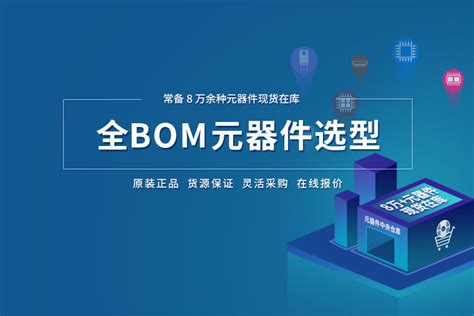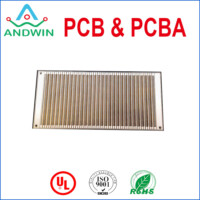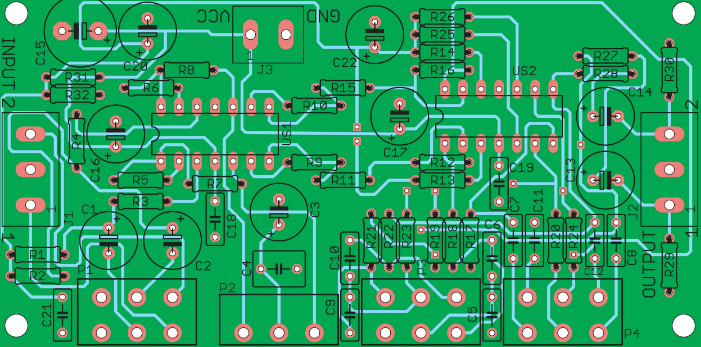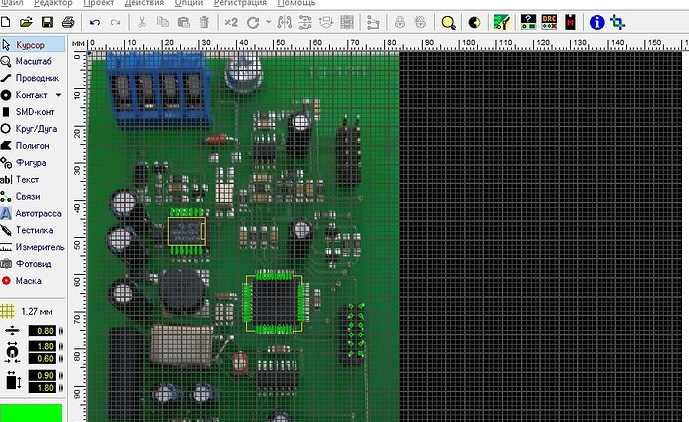Expert-Backed PCB Manufacturing: Advanced Processes at Invotec

Key Takeaways
When navigating PCB manufacturing options, understanding core differentiators helps optimize your project’s success. Leading PCB manufacturing companies prioritize design for manufacturability (DFM) to minimize errors and accelerate timelines—critical for balancing PCB manufacturing cost and quality. For businesses scaling operations, partnering with a PCB manufacturing business that offers full lifecycle support ensures seamless transitions from prototyping to mass production.
Tip: Always request DFM analysis early in the design phase—this reduces revision cycles and prevents costly delays.
Advanced providers integrate zero-defect methodologies like automated optical inspection (AOI) to eliminate functional flaws, particularly in rigid-flex PCB assemblies. Cost efficiency isn’t just about per-unit pricing; consider long-term value through material expertise and supply chain resilience. European manufacturers, for instance, often excel in high-mix, low-volume production with stringent quality controls—ideal for industries demanding precision.
As you evaluate partners, assess their ability to align with your technical requirements and business goals. The next sections explore how material selection, lead time strategies, and regional manufacturing practices further shape outcomes in PCB manufacturing.

Invotec PCB Manufacturing Excellence
When evaluating PCB manufacturing companies, technical capability and process maturity directly impact product reliability and PCB manufacturing cost structures. Invotec’s approach integrates design-for-manufacturability principles from prototype to mass production, ensuring your boards meet exacting standards without unnecessary iterations. Their PCB manufacturing business model prioritizes vertical integration, combining material sourcing, precision etching, and automated optical inspection (AOI) to minimize defects and accelerate timelines.
For complex projects, Invotec’s multi-layer rigid-flex solutions demonstrate how advanced PCB manufacturing processes reduce assembly complexity. By leveraging proprietary simulation tools, they preempt thermal or mechanical stress points, directly addressing common pain points in high-density interconnect (HDI) designs.
| Key Advantage | Traditional Approach | Invotec’s Innovation |
|---|---|---|
| Defect Rate | 500-1000 ppm | <50 ppm |
| Lead Time | 6-8 weeks | 3-4 weeks |
| Material Options | Standard FR4 | High-speed, RF, and flex substrates |
What sets Invotec apart is their ability to balance PCB manufacturing cost efficiency with performance demands. Their European production facilities adhere to ISO 9001 and IATF 16949 standards, ensuring traceability and compliance for automotive or aerospace applications. Whether optimizing for signal integrity in high-frequency boards or scaling production volumes, their expertise transforms design concepts into market-ready solutions.
Full Lifecycle PCB Solutions Guide
Navigating PCB manufacturing requires a holistic approach that spans design, prototyping, and volume production. Leading PCB manufacturing companies prioritize seamless integration across these stages to minimize PCB manufacturing cost while maintaining quality. When evaluating partners, look for providers offering design for manufacturability (DFM) analysis—a critical step to identify potential flaws early, reducing rework and delays.
A robust PCB manufacturing business pairs advanced engineering tools with material expertise, ensuring your designs align with capabilities like high-density interconnects or mixed rigid-flex configurations. For instance, optimizing layer stack-ups during the design phase can lower material waste, directly impacting PCB manufacturing cost. Post-prototype, rigorous testing protocols—such as automated optical inspection (AOI)—help maintain consistency as projects scale.
Transitioning from prototyping to full-scale production demands transparent communication. Partnering with manufacturers that offer real-time progress tracking ensures alignment with timelines, whether you’re iterating a complex rigid-flex design or ramping up for high-volume orders. This end-to-end coordination not only accelerates time-to-market but also builds resilience against supply chain disruptions.
By aligning your team with partners who emphasize full lifecycle support, you gain access to iterative feedback loops, ensuring each phase—from initial schematics to final assembly—is optimized for performance and cost efficiency. This approach transforms PCB manufacturing from a transactional process into a strategic advantage.
Zero-Defect PCB Production Strategies
Achieving zero-defect PCB production requires precision-driven systems that address both design and execution. Leading PCB manufacturing companies implement automated optical inspection (AOI) at multiple stages to catch microscopic flaws, paired with rigorous testing protocols like in-circuit testing (ICT) and flying probe verification. These systems reduce PCB manufacturing cost by minimizing rework while maintaining yield rates above 99.95%.
Statistical process control (SPC) tools track deviations in real time, enabling immediate corrections before defects propagate. For PCB manufacturing business models prioritizing reliability, certifications like IPC-A-600 and ISO 9001 ensure adherence to global quality benchmarks.
Material traceability is another critical layer—serialized tracking of substrates and laminates prevents batch inconsistencies. Simultaneously, closed-loop feedback between design teams and production floors optimizes layouts for manufacturability, eliminating tolerance stacking risks. This approach not only meets aerospace and medical-grade standards but also accelerates time-to-market by avoiding post-production fixes.
By aligning with partners that integrate these strategies, you secure PCBs built to withstand operational stresses while controlling long-term PCB manufacturing cost through upfront quality investment.
Advanced PCB Material Selection Tips
When selecting materials for your PCB manufacturing project, understanding performance requirements and environmental factors is crucial. Start by evaluating thermal stability—high-Tg laminates (like FR-4 or polyimide) ensure reliability in high-temperature applications, while low-loss materials (e.g., Rogers substrates) minimize signal attenuation for high-frequency designs. For PCB manufacturing cost optimization, balance material expenses with long-term durability; cheaper substrates may reduce upfront costs but risk premature failure in demanding conditions.
Collaborate closely with PCB manufacturing companies to align material choices with fabrication capabilities. For instance, rigid-flex designs demand compatible flex-core materials (such as polyimide films) that withstand repeated bending without cracking. Consider surface finishes too: ENIG (Electroless Nickel Immersion Gold) offers superior solderability for complex assemblies, while HASL (Hot Air Solder Leveling) suits budget-sensitive projects.
Material selection also impacts PCB manufacturing business outcomes—poor choices can extend lead times or increase rework rates. Prioritize suppliers with certified material traceability to avoid counterfeit components and ensure compliance with industry standards like IPC-4101. By integrating material expertise early in the design phase, you streamline production and avoid costly revisions, ensuring your boards meet both technical and economic objectives.

Rigid-Flex PCB Lead Time Optimization
When managing PCB manufacturing timelines for rigid-flex designs, you need strategies that balance speed with precision. Leading PCB manufacturing companies achieve this by integrating design-for-manufacturability principles early in the process, minimizing iterative revisions that delay production. For instance, aligning your CAD files with fabrication capabilities reduces back-and-forth adjustments, shaving days off standard lead times.
Material selection also plays a critical role. Advanced substrates like polyimide or liquid crystal polymer (LCP) require specialized handling but enable faster processing in high-frequency applications. Partnering with a PCB manufacturing business that maintains pre-certified material inventories ensures immediate availability, avoiding procurement bottlenecks.
To further optimize PCB manufacturing cost and timelines, consider modular production workflows. Splitting complex rigid-flex boards into smaller, parallel-processed panels allows simultaneous testing and assembly. Automated optical inspection (AOI) systems then verify quality at each stage, preventing defects from cascading into time-consuming reworks.
Finally, transparent communication with your manufacturer about project milestones ensures alignment. Regular progress updates and risk assessments enable proactive adjustments, keeping your rigid-flex PCB project on schedule without compromising reliability.
European PCB Manufacturing Best Practices
When evaluating PCB manufacturing partners, understanding regional operational standards becomes critical. European PCB manufacturing companies distinguish themselves through stringent adherence to automation-driven workflows and environmental compliance protocols. These practices ensure consistent quality while addressing PCB manufacturing cost challenges through waste reduction and energy-efficient processes.
By prioritizing ISO-certified production frameworks, European facilities minimize human error through advanced robotics, directly impacting defect rates and long-term reliability. This approach benefits your PCB manufacturing business by reducing rework expenses and accelerating time-to-market. Additionally, regional suppliers often integrate closed-loop material recycling systems, aligning with circular economy principles without compromising material performance.
Transitioning to European partners also means accessing localized supply chains, which mitigate geopolitical risks and material shortages. While initial PCB manufacturing cost may appear higher compared to offshore options, the total cost of ownership often balances through fewer quality disputes and streamlined logistics. For projects requiring precision in high-frequency or harsh-environment applications, Europe’s expertise in advanced substrates and multilayer fabrication proves indispensable.
These best practices not only elevate product durability but also future-proof your supply chain against evolving regulatory demands—a strategic advantage in competitive markets.
Cutting-Edge Rigid-Flex PCB Processes
When evaluating PCB manufacturing companies for complex rigid-flex projects, you need partners capable of balancing precision with scalability. Modern rigid-flex PCB processes integrate laser direct imaging and automated optical inspection to ensure micron-level accuracy across dynamic bend areas. These advanced techniques minimize PCB manufacturing cost by reducing material waste and eliminating rework—critical factors when managing high-mix, low-volume production runs.
Leading providers optimize layer stack-ups using hybrid materials like polyimide-adhesive combinations, which enhance thermal stability without compromising flexibility. This approach aligns with PCB manufacturing business priorities, where reliability and signal integrity are non-negotiable for aerospace or medical applications. To accelerate timelines, look for manufacturers offering concurrent engineering support—this bridges design intent with production realities, avoiding costly mid-stream revisions.
For projects requiring rapid iteration, advanced PCB manufacturing workflows leverage AI-driven process simulations to predict stress points in flex regions. Pairing this with real-time impedance control ensures compliance with high-frequency performance standards. By prioritizing such innovations, you mitigate risks associated with traditional rigid-flex assembly while maintaining alignment with European regulatory benchmarks.
Design for Manufacturability in PCBs
When developing complex boards, aligning your design with PCB manufacturing capabilities from the outset prevents costly revisions. Design for manufacturability (DFM) principles ensure your layout adheres to production realities, balancing performance goals with practical constraints like material availability and process tolerances. Leading PCB manufacturing companies prioritize early collaboration, analyzing factors such as trace spacing, via placement, and layer stack-ups to optimize yield rates.
For instance, specifying overly tight tolerances might improve electrical performance on paper but could inflate PCB manufacturing cost by 20-35% due to specialized tooling or extended testing. Instead, leveraging standardized design rules from your fabrication partner streamlines production while maintaining quality. This approach becomes critical in rigid-flex PCB projects, where material transitions and bend radii demand precise engineering to avoid delamination risks.
Integrating DFM checks into your workflow also strengthens the PCB manufacturing business case by minimizing scrap and accelerating time-to-market. Tools like automated DFM validation software flag potential issues—from copper imbalances to inadequate solder mask clearances—before prototypes are built. By treating manufacturing readiness as a core design requirement, you create boards that perform reliably and align with industrial-scale production realities.

Conclusion
When navigating PCB manufacturing partnerships, aligning with companies that prioritize process-driven excellence ensures your project’s success. PCB manufacturing companies that integrate zero-defect methodologies and full lifecycle support minimize risks while optimizing PCB manufacturing cost through reduced waste and iterative design improvements. By leveraging expertise in rigid-flex PCB processes and advanced material selection, you gain access to solutions that balance performance with scalability—critical for staying competitive in dynamic markets.
For businesses managing a PCB manufacturing business, adopting European manufacturing standards guarantees adherence to stringent quality benchmarks without compromising agility. This focus on design for manufacturability (DFM) ensures your prototypes transition seamlessly to mass production, avoiding costly redesigns. Whether prioritizing speed-to-market or long-term reliability, partnering with a manufacturer that embeds material science expertise into every phase strengthens your product’s lifecycle. Ultimately, the right collaboration transforms PCB manufacturing from a transactional step into a strategic advantage, empowering innovation while controlling costs.
Frequently Asked Questions
How do PCB manufacturing companies ensure quality control in production?
Leading PCB manufacturing providers implement automated optical inspection (AOI) and electrical testing protocols to maintain zero-defect standards. These processes align with ISO-certified workflows, minimizing errors in complex rigid-flex designs.
What factors influence PCB manufacturing cost for advanced projects?
Cost drivers include material selection (e.g., high-frequency laminates), layer count, and surface finishes. Reputable PCB manufacturing businesses optimize expenses through design-for-manufacturability (DFM) analysis while maintaining IPC Class 3 reliability requirements.
Can European PCB manufacturing partners match accelerated timelines?
Top-tier facilities combine automated production lines with just-in-time material sourcing to achieve lead times 20% faster than industry averages. This efficiency is critical for prototyping and high-volume rigid-flex PCB orders.
Why partner with full-service PCB manufacturing companies?
End-to-end providers streamline communication by managing design validation, material procurement, and assembly under one roof. This integrated approach reduces revision cycles and prevents supply chain disruptions.
How does material expertise impact PCB manufacturing business outcomes?
Specialized knowledge in high-speed substrates and flexible dielectrics ensures optimal signal integrity in mission-critical applications. Partners with ISO 14001 certification further guarantee environmentally compliant material handling.
Ready to Optimize Your PCB Project?
For tailored solutions combining PCB manufacturing expertise with rapid turnaround capabilities, please click here to consult with industry specialists.







